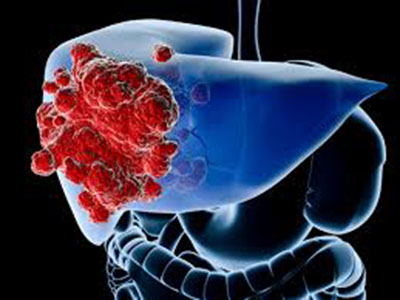
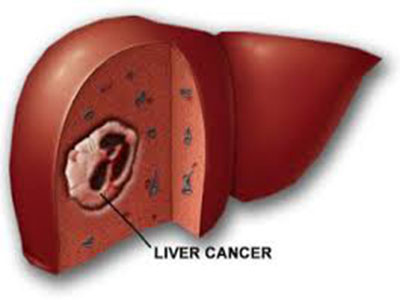
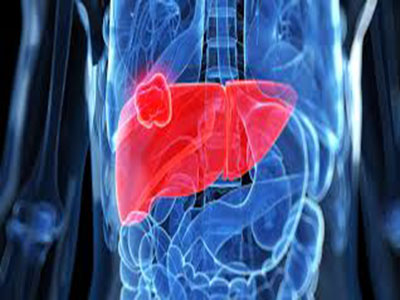
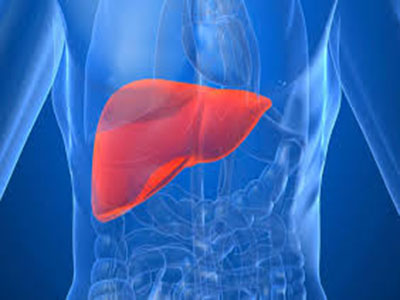




Liver Cancer
Because the liver is made up of several different types of cells, several types of tumors can form there. Some of these are benign (noncancerous), and some are cancerous and can spread to other parts of the body (metastasize). These tumors have different causes and are treated differently. The outlook for health or recovery depends on what type of tumor you have.
The more common benign tumors of the liver include:
-
Hemangioma
-
Hepatic adenoma
-
Focal nodular hyperplasia
-
Cysts
-
Lipoma
-
Fibroma
-
Leiomyoma
None of these tumors are treated like liver cancer. They may need to be removed surgically if they cause pain or bleeding.
The liver continuously filters blood that circulates through the body, converting nutrients and drugs absorbed from the digestive tract into ready-to-use chemicals. The liver performs many other important functions, such as removing toxins and other chemical waste products from the blood and readying them for excretion. Because all the blood in the body must pass through it, the liver is unusually accessible to cancer cells traveling in the bloodstream.
The liver can be affected by primary liver cancer, which arises in the liver, or by cancer which forms in other parts of the body and then spreads to the liver. Most liver cancer is secondary or metastatic, meaning it started elsewhere in the body. Primary liver cancer, which starts in the liver, accounts for about 2% of cancers in the U.S., but up to half of all cancers in some undeveloped countries. This is mainly due to the prevalence of hepatitis, caused by contagious viruses, that predisposes a person to liver cancer. In the U.S., primary liver cancer strikes twice as many men as women, at an average age of 67.
The liver can be affected by primary liver cancer, which arises in the liver, or by cancer which forms in other parts of the body and then spreads to the liver. Most liver cancer is secondary or metastatic, meaning it started elsewhere in the body. Primary liver cancer, which starts in the liver, accounts for about 2% of cancers in the U.S., but up to half of all cancers in some undeveloped countries. This is mainly due to the prevalence of hepatitis, caused by contagious viruses, that predisposes a person to liver cancer. In the U.S., primary liver cancer strikes twice as many men as women, at an average age of 67.
Liver cancers include:
- Hepatocellular carcinoma (HCC)
- Cholangiocarcinoma (These are really cancers of the bile duct.)
Our Vision...
I believe in using the foreces of nature to create a medicine which utilizes these forces - applying scientific methods and adapting them in a natural way - to harm the body as little as possible. Hyperthermia fully meets this criteria
- 1
- 2
- 3
 Dr. James I. Bicher, M.D.
Dr. James I. Bicher, M.D.
Hadassah Medical School, Jerusalem, Israel
Member of National Committee on Hyperthermia. A Founder and Past President of the North American Hyperthermia Group (NAHG). Secretary and (1972-1981) President (1981) of International Society of Oxygen Transport of Tissue. Zondec Award, (Hadassah Medical School, Jerusalem), 1962. President and Founder of the American Society of Clinical Hyperthermia (ASCHO).
 Dr. Ralph S. Wolfstein, M.D.
Dr. Ralph S. Wolfstein, M.D.
University of Michigan
Former, "Acting Director, Department of Radiation Therapy Nuclear Medicine: at Cedars - Sinai Medical Center. Member in Society of Nuclear Medine, Charter Member in American College of Nuclear Physicians. Member of American Society of Therapeutic Radiology and Oncology. Member of Radiation Research Society. Charter Member of International Clinical Hyperthermia Society.
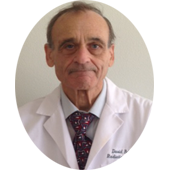 Dr. David Bell, M.D.
Dr. David Bell, M.D.
Tulane University School of Medicine, New Orleans
PhD in mathematics from, "Brown University".Community Hospital, Long Beach, CA - Medical Director of Radiation Oncologist. Board Certified, Society Member of, "PHI BETA KAPPA & SIGMA XI".
